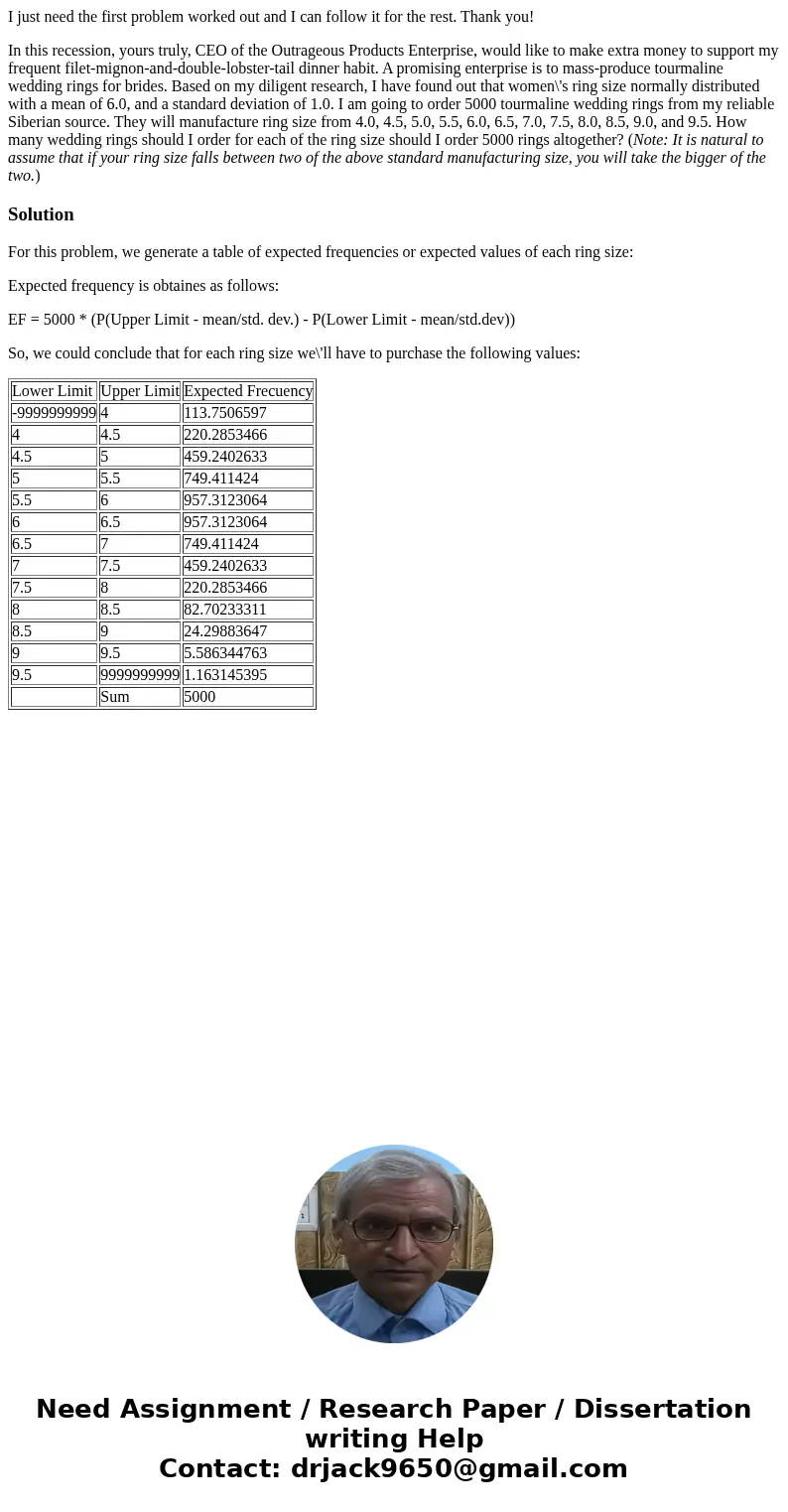I just need the first problem worked out and I can follow it
I just need the first problem worked out and I can follow it for the rest. Thank you!
In this recession, yours truly, CEO of the Outrageous Products Enterprise, would like to make extra money to support my frequent filet-mignon-and-double-lobster-tail dinner habit. A promising enterprise is to mass-produce tourmaline wedding rings for brides. Based on my diligent research, I have found out that women\'s ring size normally distributed with a mean of 6.0, and a standard deviation of 1.0. I am going to order 5000 tourmaline wedding rings from my reliable Siberian source. They will manufacture ring size from 4.0, 4.5, 5.0, 5.5, 6.0, 6.5, 7.0, 7.5, 8.0, 8.5, 9.0, and 9.5. How many wedding rings should I order for each of the ring size should I order 5000 rings altogether? (Note: It is natural to assume that if your ring size falls between two of the above standard manufacturing size, you will take the bigger of the two.)
Solution
For this problem, we generate a table of expected frequencies or expected values of each ring size:
Expected frequency is obtaines as follows:
EF = 5000 * (P(Upper Limit - mean/std. dev.) - P(Lower Limit - mean/std.dev))
So, we could conclude that for each ring size we\'ll have to purchase the following values:
| Lower Limit | Upper Limit | Expected Frecuency |
| -9999999999 | 4 | 113.7506597 |
| 4 | 4.5 | 220.2853466 |
| 4.5 | 5 | 459.2402633 |
| 5 | 5.5 | 749.411424 |
| 5.5 | 6 | 957.3123064 |
| 6 | 6.5 | 957.3123064 |
| 6.5 | 7 | 749.411424 |
| 7 | 7.5 | 459.2402633 |
| 7.5 | 8 | 220.2853466 |
| 8 | 8.5 | 82.70233311 |
| 8.5 | 9 | 24.29883647 |
| 9 | 9.5 | 5.586344763 |
| 9.5 | 9999999999 | 1.163145395 |
| Sum | 5000 |

 Homework Sourse
Homework Sourse